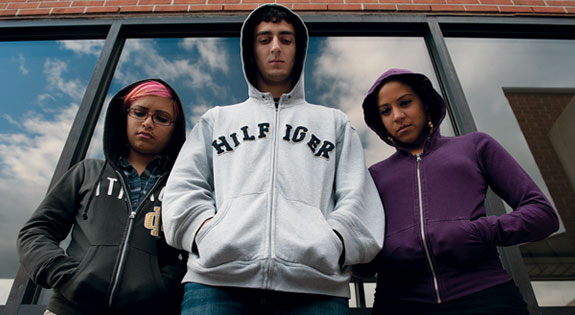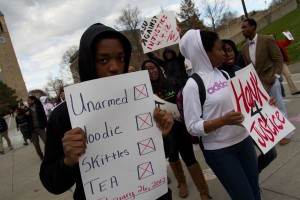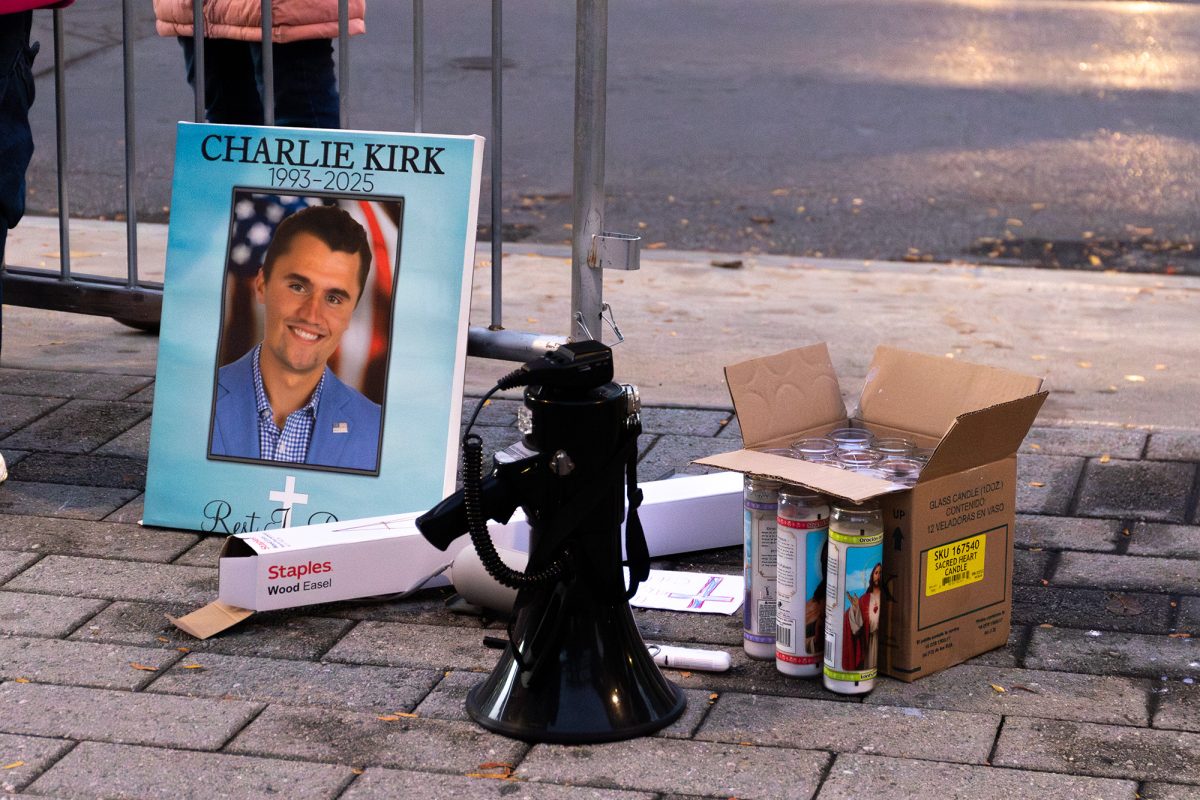
Students at Ithaca College and campuses nationwide are pulling up their hoods to shed light on the racial profiling discourse surrounding the Trayvon Martin case.
On Feb. 26, 17-year-old Martin was returning home from 7-Eleven with Skittles and iced tea in hand in Sanford, Fla. Martin was unarmed and wearing a hooded sweatshirt at the time when 28-year-old George Zimmerman, a crime watch volunteer, shot and killed the black teenager.
The “Hoodie Movement” emerged in reaction to Martin’s death and as a call for Zimmerman’s trial.
Though details of the altercation before Martin’s shooting remain obscure, many outraged Americans are calling for justice.
While Zimmerman is claiming self-defense under the “Stand Your Ground” Law in Florida, the case remains under investigation.
The “Stand Your Ground” Law, implemented in 2005, makes it lawful for citizens to act in self-defense using any means necessary for protection and still be immune from criminal prosecution. More than 20 states in the United States, including Florida, have implemented this law. Because of this, Zimmerman has yet to be charged and tried.
Due to the outcry surrounding Zimmerman’s impending arrest, Senator Chris Smith, D-Fla., announced his own task force to examine the law.
President Barack Obama, along with other political figures such as Mitt Romney and Bill Clinton, and celebrities like Tyler Perry and Spike Lee, addressed the case. Obama made his first comment on the case in his Rose
Garden appearance Mar. 23, saying that if he had a son, he would look like Martin.
Today, Ithaca College students are also speaking up about the case and planning to gather in front of the library to demand justice for Martin’s death.
Sophomore Cöelis Mendoza, organizer of the campus’ protest, said the movement is in response to the racial tensions in Ithaca and a way for
participants to stand in solidarity with rallies nationwide that are demanding Zimmerman’s arrest.
“There [is] a lot of coverage about it as far as racial tensions are concerned,” Mendoza said. “The ‘Hoodie Movement’ specifically refers to Geraldo Rivera’s comment on Fox News that the hoodie is just as responsible for Trayvon’s death as George Zimmerman shooting him. In other words, saying that if Trayvon had not worn a hoodie with the hood up and not look like a suspicious thug, then he would not have been shot.”

Sophomore Tessa Crisman said she supports the “Hoodie Movement,” but is also cognizant of the daily discrimination that may not get as much attention as Martin’s case has. She said she hopes people begin to look at the case sociologically.
“Black men are posed in society as a threat, whereas in reality they are often the target themselves in police violence,” Crisman said.
“Trayvon Martin is not the exception; he’s the rule. I don’t want to minimize the experience of his family or his community, and I think what happened to him is horrible, but I honestly don’t think that it is uncommon because there is so much police violence against black men.”
Martin’s case, though in Florida, had a domino effect on the country as many states and cities are beginning to reflect on the racial tensions present in their own communities.
Two years ago, similar race-centered conflict surrounded an Ithaca case. Shawn Greenwood, a black Ithaca resident, was shot and killed by Sgt. Bryan Bangs in February of 2010. Bangs and several officers were attempting to serve a search warrant for a narcotics investigation when Greenwood resisted removal from his vehicle.
On July 1, 2010, the jury ruled that Bangs acted in self-defense. A week later, Bangs’ home was targeted by an arsonist attack in protest of his acquittal.
Freshman Winston Mayo said Martin’s case, like Greenwood’s situation, is an example of racial profiling.
“Because he had his hood up, the shooter described him as a suspicious character, even though there were reports saying that it was raining that day,” Mayo said. “Him being black and wearing a hood up — that’s racial profiling. The shooter probably assumed that [Martin] was probably some gangbanger or some type of thief in the neighborhood.”
Martin’s death has also spurred conversations in classes all over campus.
Last week, sociologist and author Patricia Hill Collins addressed the college about the crisis of black men in her presentation, “At the Center of the Storm, Black Men, Violence, and U.S. Society,” sponsored by the Center for the Study of Race, Culture and Ethnicity during its “Black Men” series.
In her presentation, Collins said black men in particular have a heightened vulnerability to oppression in American society.
According to the FBI’s 2010 hate crime statistical report, there were 3,949 victims of racially motivated crime in the U.S. Of that number, 70 percent were of “anti-black” bias. This percentage is fairly consistent in the last three years.
There is not sufficient detail to determine whether Martin’s case is racially motivated. Currently, some of the key pieces of evidence in the case are the 911 calls Zimmerman made to the police. There are two words that remain unclear during the call that many say make up a racial slur.
Craig Gurian, adjunct professor of law at Fordham University and executive director of the Anti-Discrimination Center in New York, said the media give attention to incidents similar to Martin’s, but ignore subtle forms of prejudice such as discrimination in the classroom and workplace, where no deaths are present, but lives are still adversely affected.
“The fact that it may not have been justified and people were of two different racial or ethnic backgrounds does not mean that it automatically is discrimination,” Gurian said. “There are a ton of people who are saying how terrible it is, and that’s very easy to do. But when it comes to making structural changes — whether that’s in terms of education or housing or employment — those people are nowhere to be found.”
Gustavo Licon, assistant professor in the CSCRE, said there is a collective societal fear of black men, which creates a justification to act violently towards that group. Though Zimmerman was half-Latino, Licon said the interracial violence still functions to help perpetuate racial stereotypes according to the Eurocentric fantasy construction.
“Even as a half-Latino, he is still acting within a white supremacist framework that informs his ideas of what a ‘thug’ looks like or someone who’s suspicious looks like,” Licon said. “It is still filtered through racial knowledge where Trayvon Martin would be targeted.”






